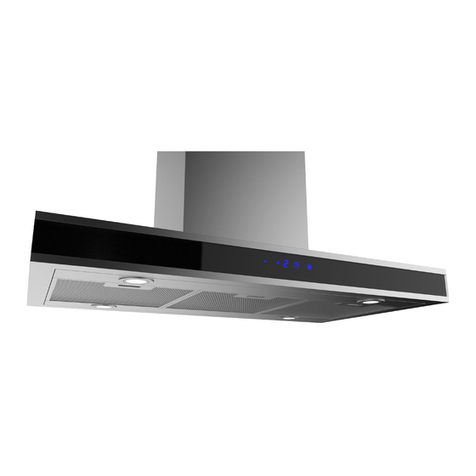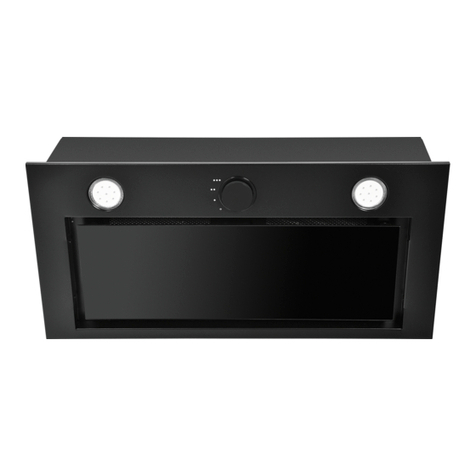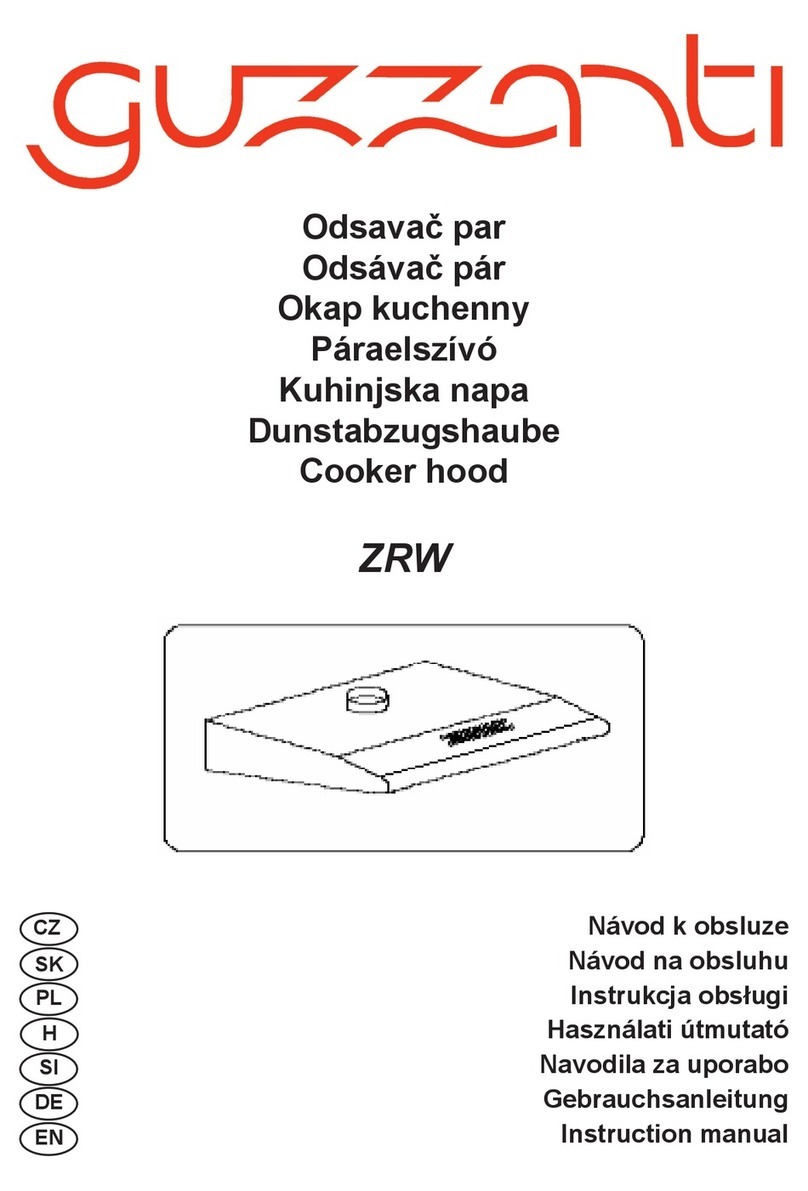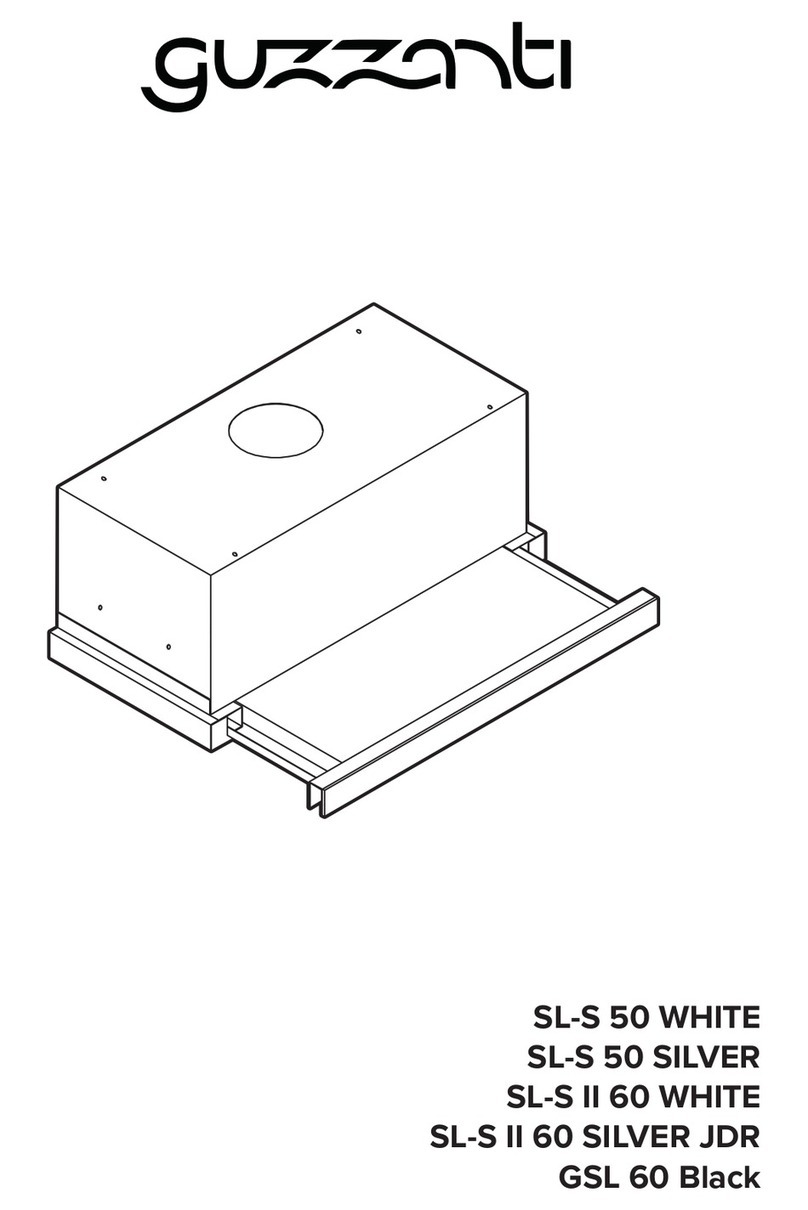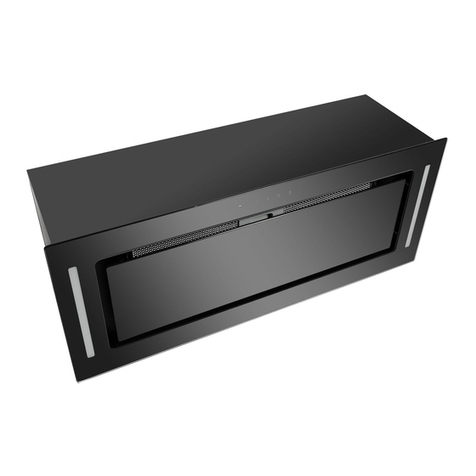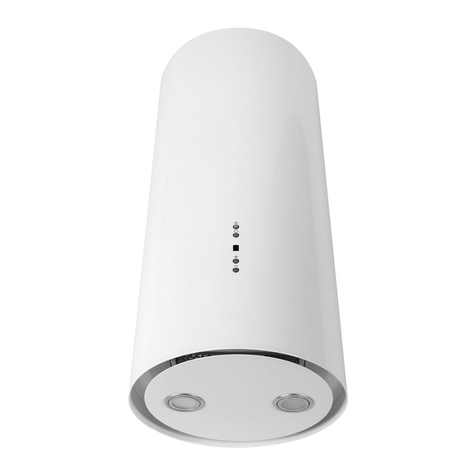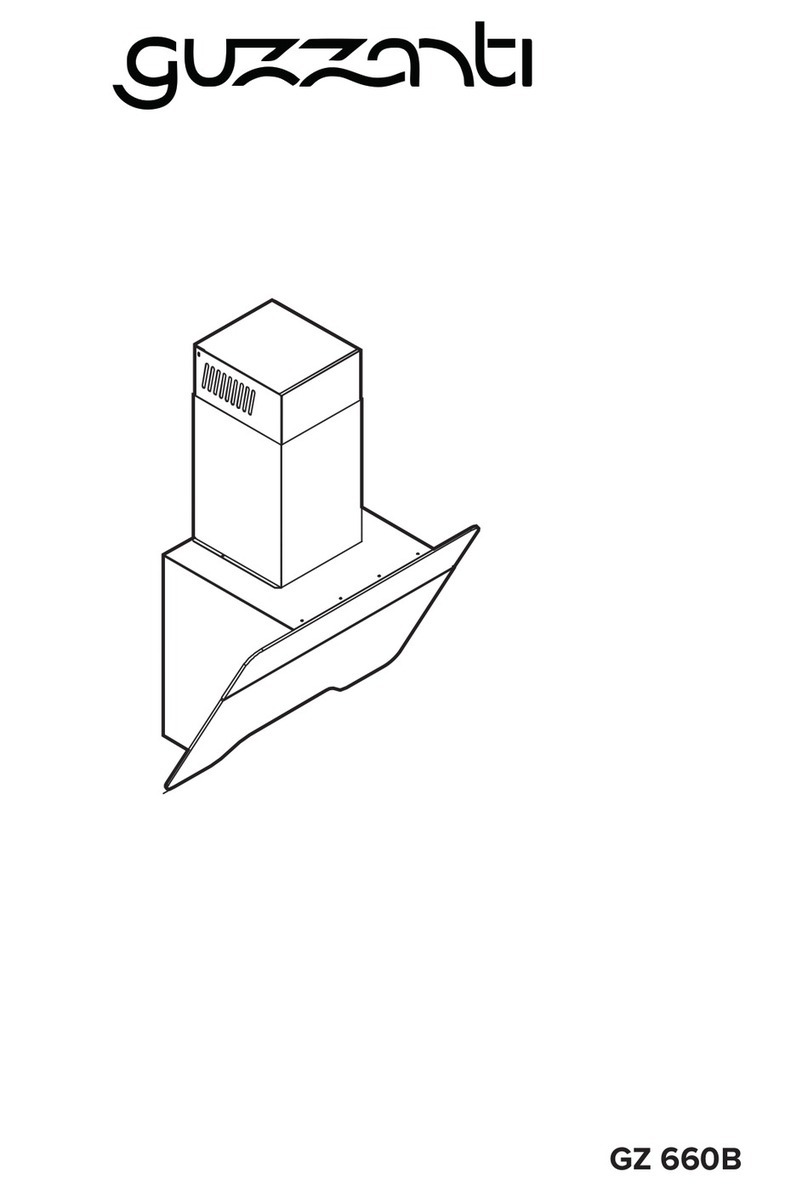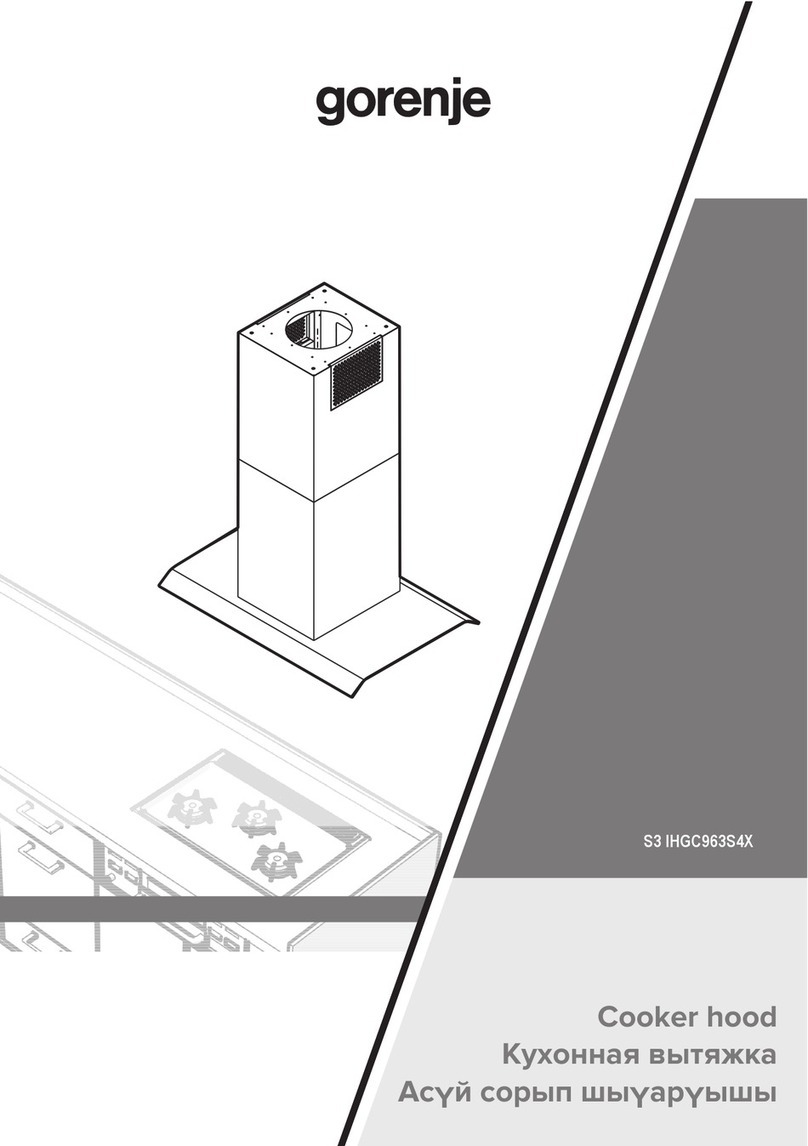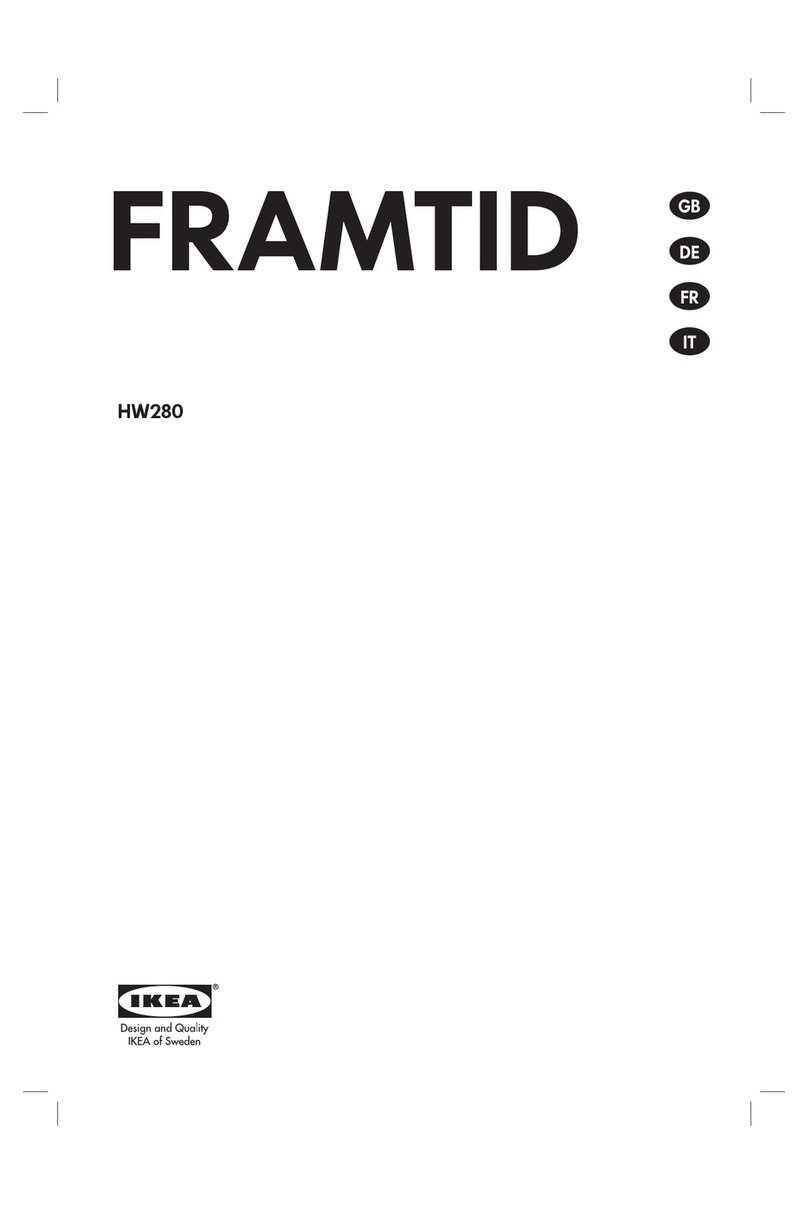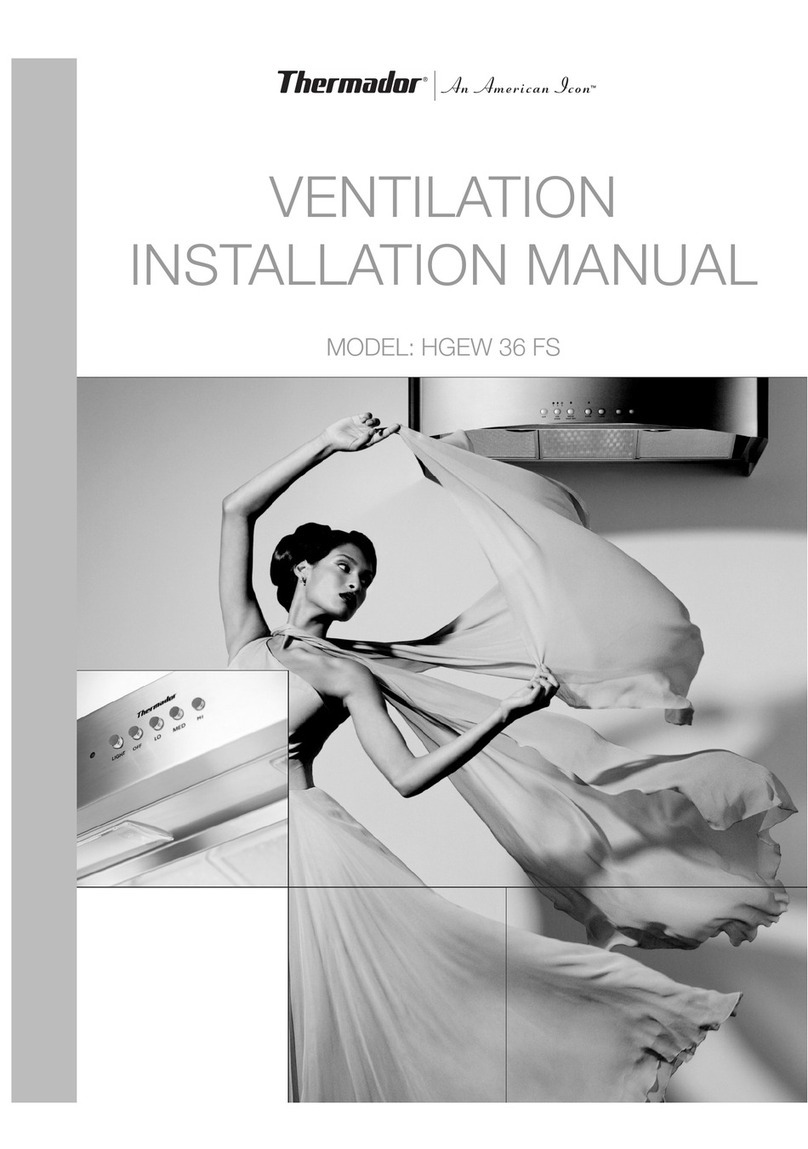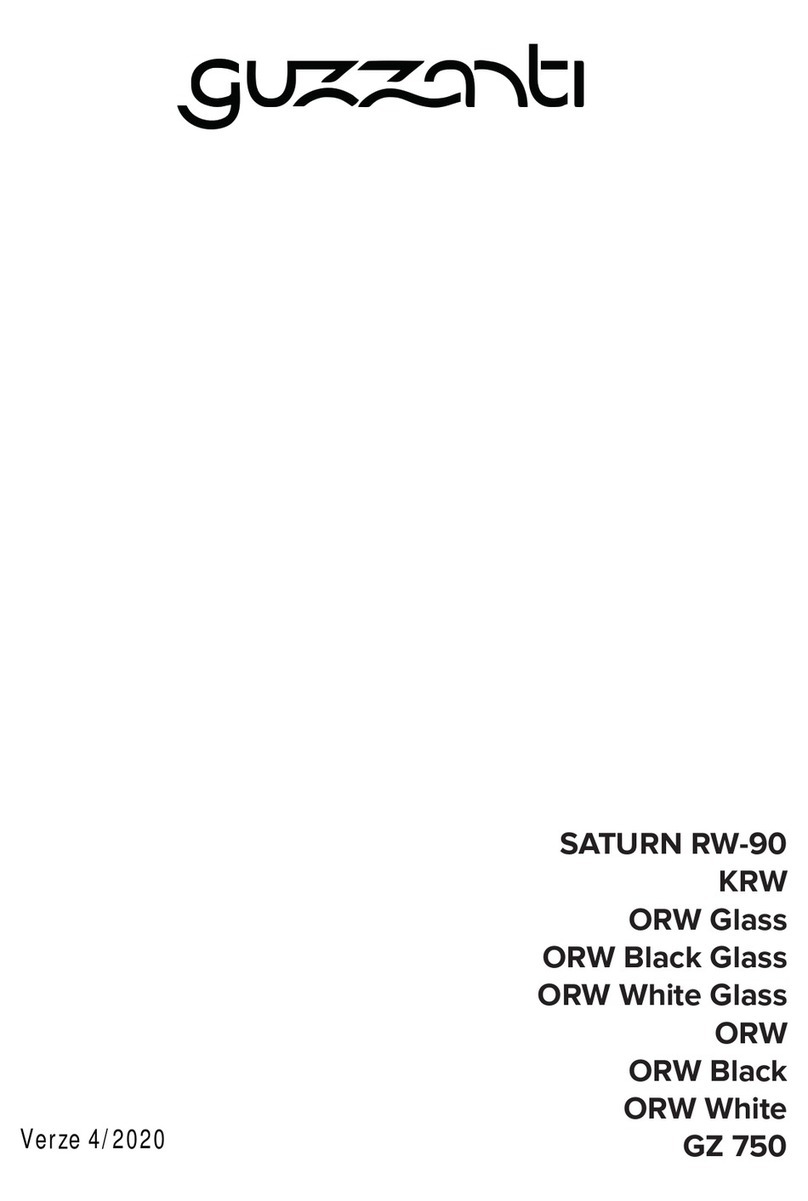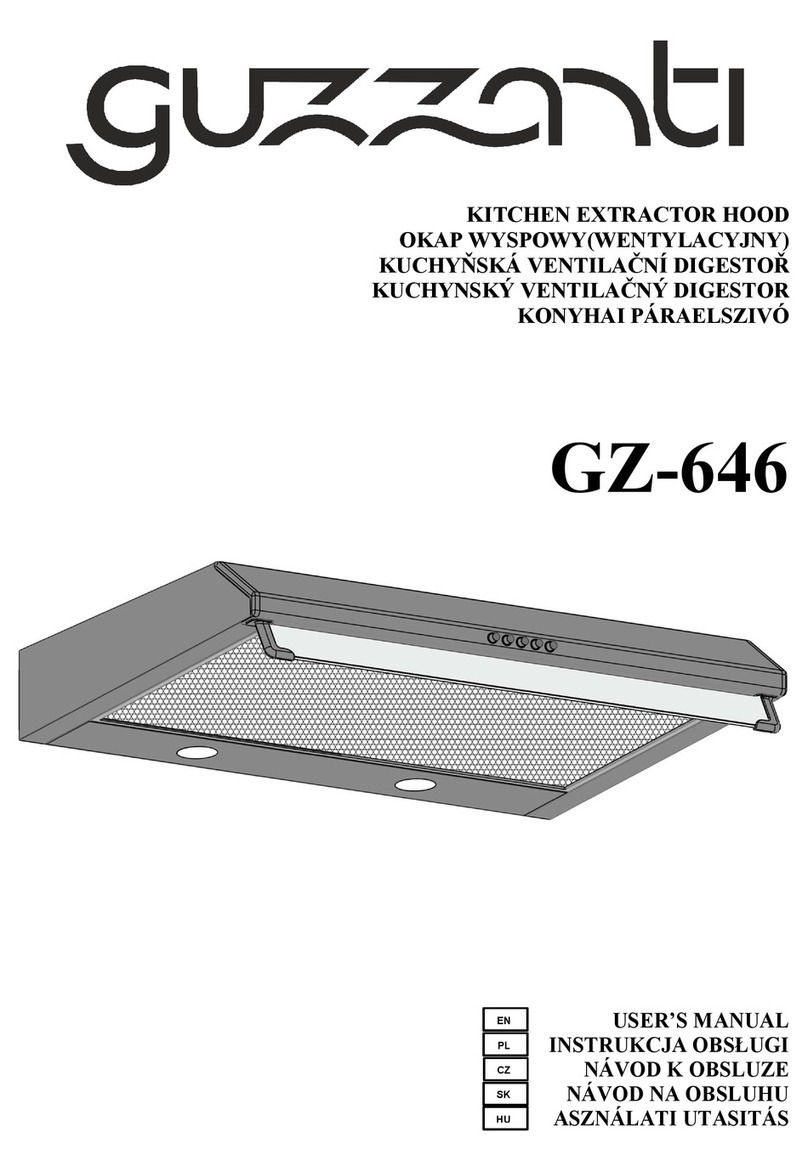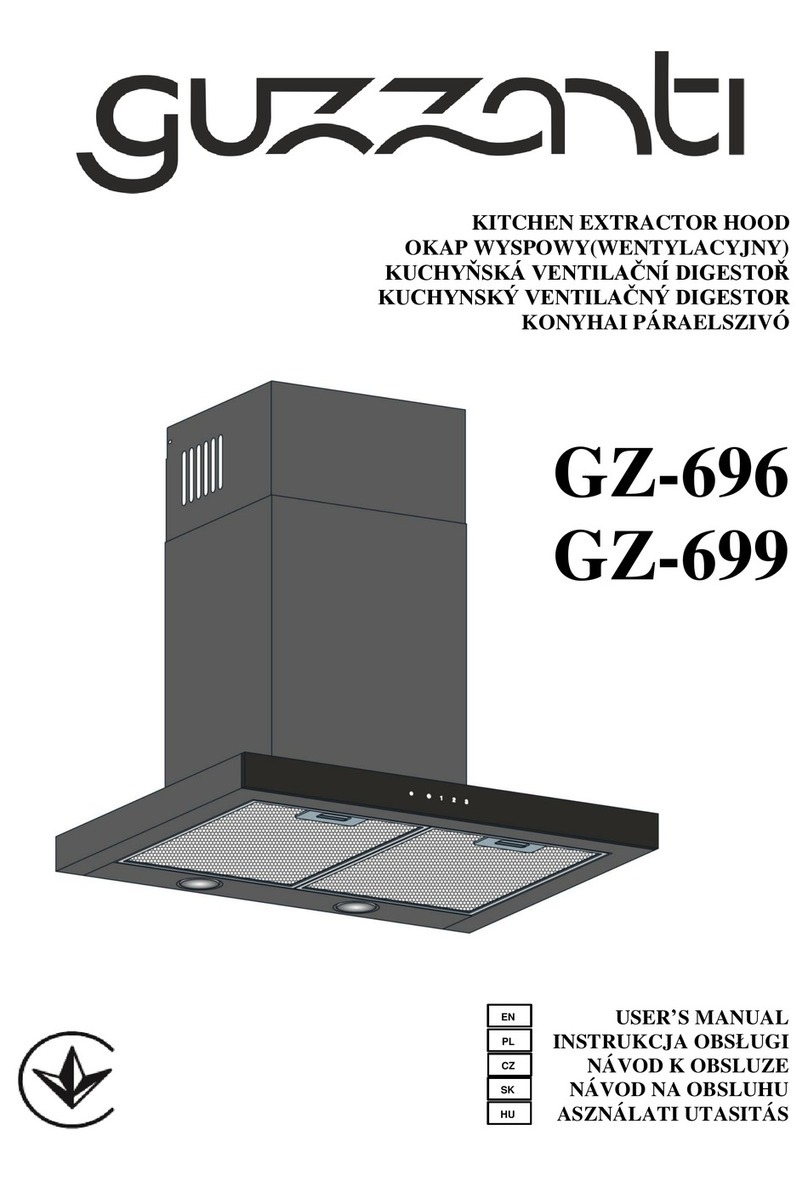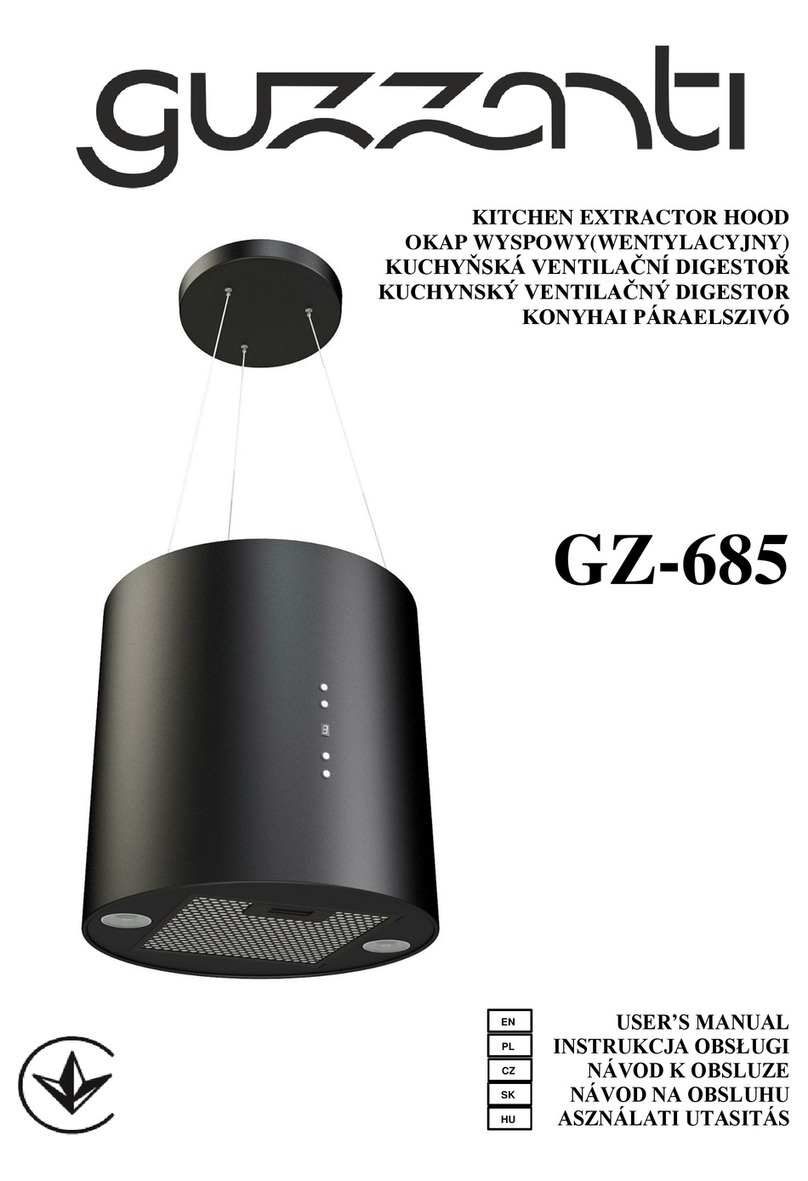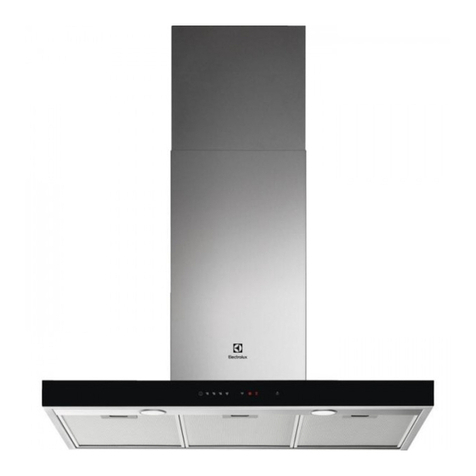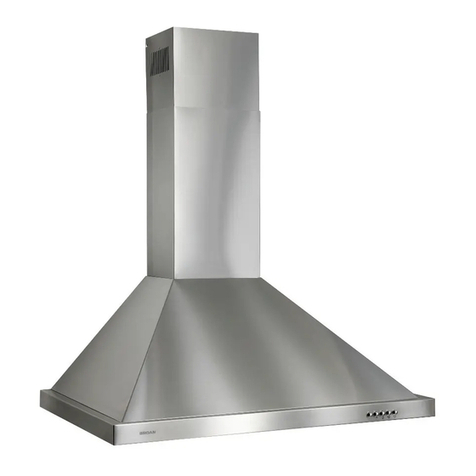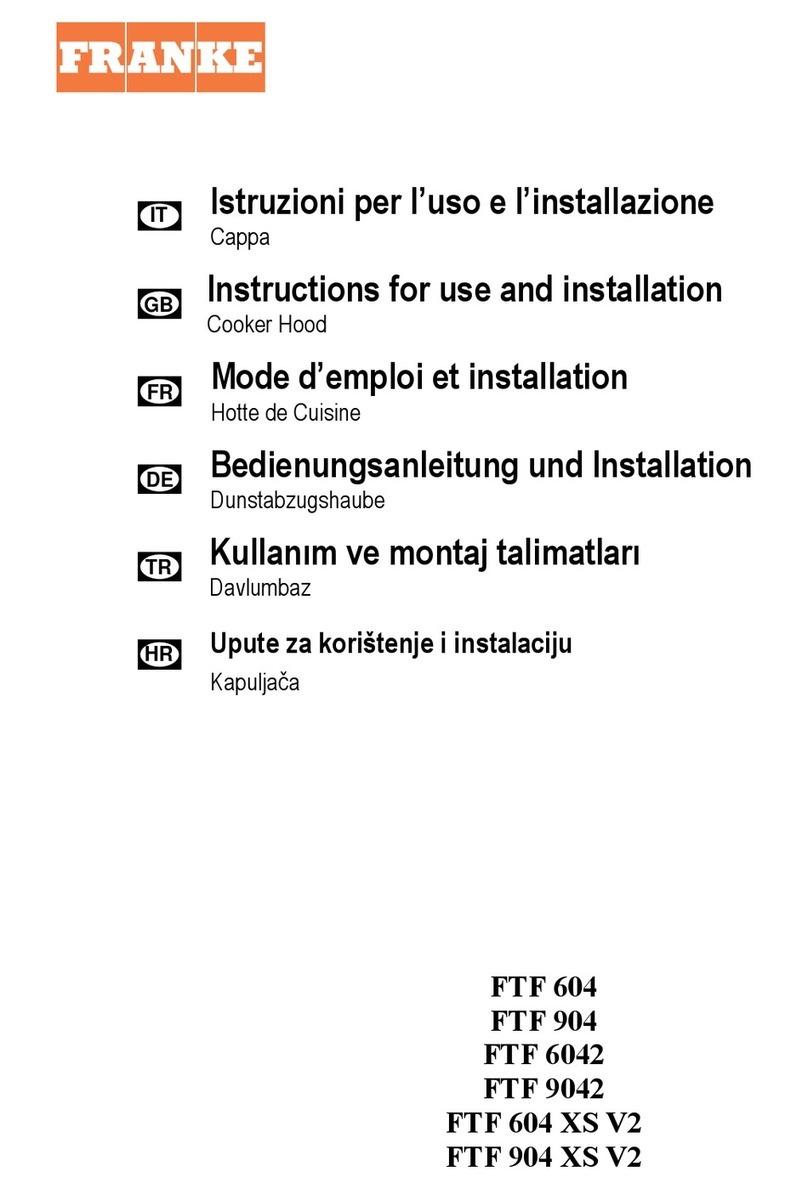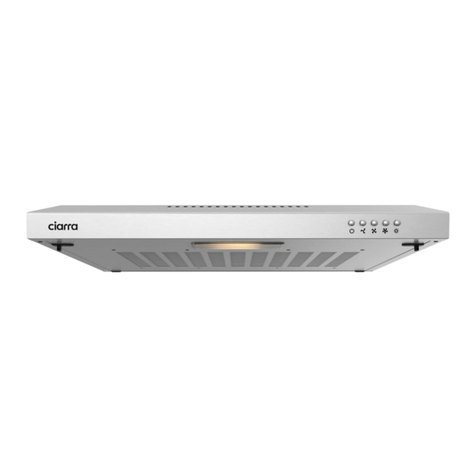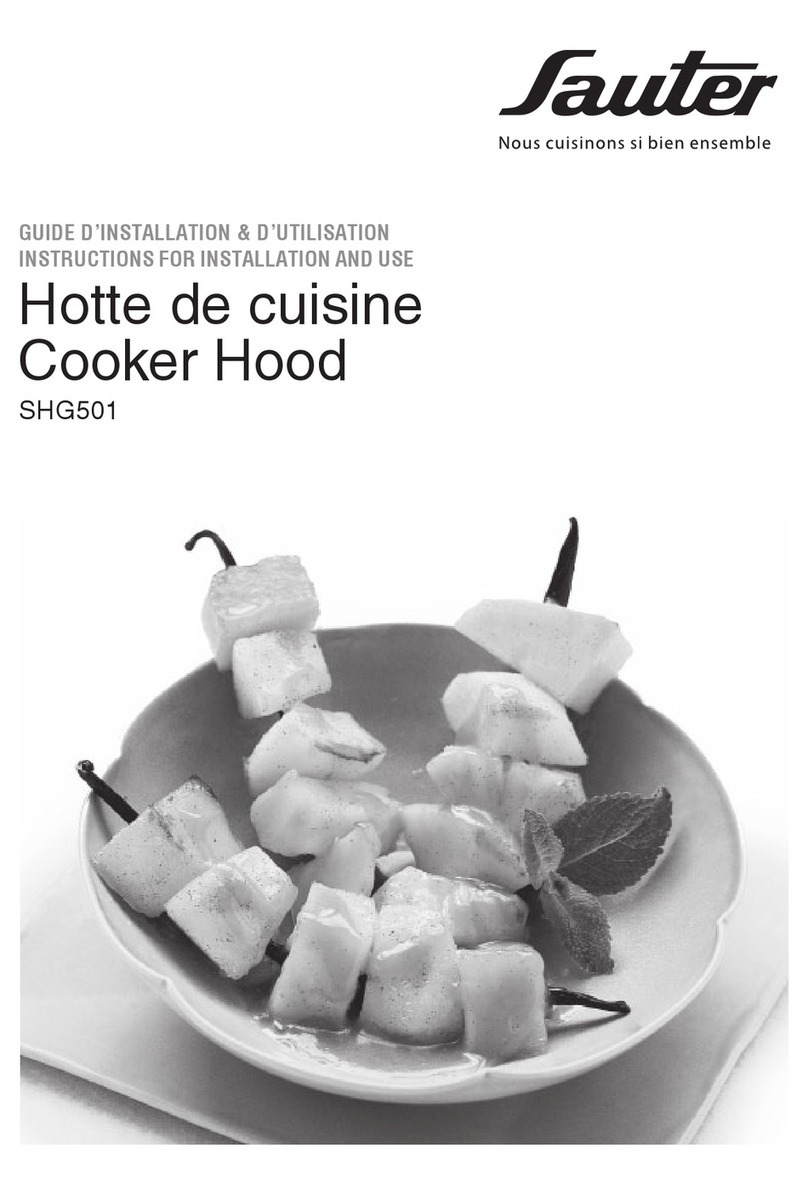
III Components
ZRW kitchen hood consists of the following elements (Fig. 1):
Hood casing [A], provided with fan outlets [B] and [F], set of switches [D], flange [C] for
connecting the ventilation conduit.
Fig.1
IV Operating conditions
1. The kitchen hood was designed for removal of kitchen fumes to the outside. It should be
connected to an appropriate ventilation duct (do not connect the hood to any chimney, smoke
or flue-gas ducts which are in use).
2. The safe distance between a cooker plate and the kitchen hood should be at least 650 mm.
3. Do not leave open flame under the hood. When removing pots from the burners set the flame
to its minimum level.
4. Any food cooked in fat shall be constantly monitored, since overheated fat can ignite very
easily.
5. The textile grease filter should be replaced, and the aluminium filter
should be cleaned at least every 2 months in connection with the existing
fire danger (saturated fat is very flammable).
6. Pull the plug of the power cord from a wall socket before any filter
cleaning or repair operation.
7. If any other non-electric devices are used in the same room as the hood
(e.g. liquid fuel ovens, flow-through or volumetric water heaters), it is
necessary to provide appropriate ventilation (air supply). Safe operation
is possible when during simultaneous operation of the hood and
combustion devices dependent on air supply the negative pressure of not
more than 0.004 milibar is maintained at the location of these devices
inside the room (this point does not apply when the hood is used as an
odour absorber).
8. When connecting to 230V power supply network use an electric socket
in working order.
Fig. 2
3
